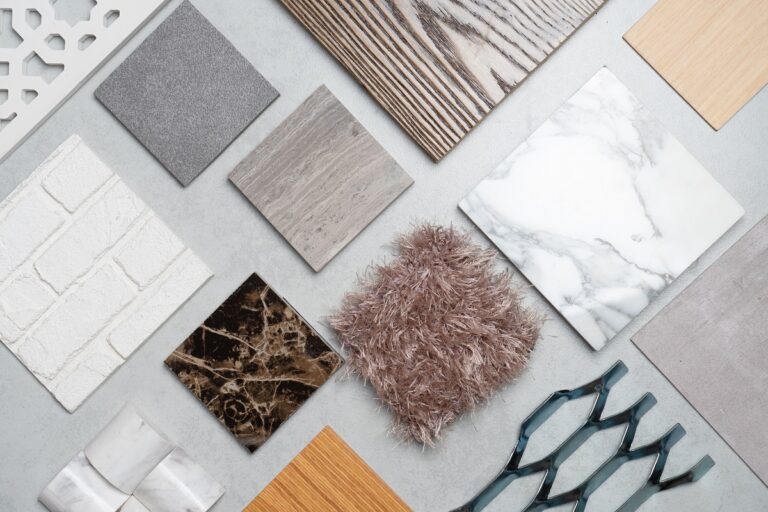As your interior design business grows, the items that might have once fit in your basement or spare bedroom will inevitably require their own space.
It might be time to use a receiving warehouse that can streamline the sourcing and procuring process, enabling you to receive, store, inspect, and organize items in advance of installation day.
Ready to start thinking more seriously about incorporating a receiving warehouse into your process?
Let’s break down what to consider as you take this next step in your business.
Table of Contents
How to vet an interior design receiving warehouse
Choosing the right receiving warehouse will cut down on your stress and keep projects running smoothly.
Before selecting a warehouse facility, consider the following:
1. Interior design industry experience
Choose a warehouse that understands the unique needs of interior designers. From unboxing luxury items to inspecting pieces for damage, the right warehouse will have protocols specifically designed for design firms.
Your receiving warehouse should be familiar with the typical interior design materials—from floor tiles to antique furniture—and they should have the proper equipment and storage conditions to keep everything safe.
2. Premium services
While a standard receiving dock may suffice for big-box retailers, interior design products often require careful handling. Services you might need include:
- Item inspection and condition reporting
- Professional assembly
- Photography of received goods
- Climate-controlled storage
- Delivery coordination
- Installation assistance
These services ensure your materials and furnishings are treated with the attention and care they deserve.
3. Inventory management systems
Just like you rely on a solid interior design project management tool, efficient warehouses use inventory management software. These tools track every item they receive, store, and deliver. You should have online access to real-time updates, including:
- What has arrived
- Item conditions and photos
- Notes about discrepancies or damages
- Scheduled pick-ups and deliveries
Inventory management systems drastically improve warehouse-designer communication, allowing you to keep tabs on every item you’re storing without constantly picking up the phone.
4. Location and delivery range
A centrally located warehouse with a flexible delivery radius ensures faster response times and lower transportation costs. If you work in various locations, try to find a warehouse with multiple facilities nationwide.
5. Damage and claims protocol
No designer wants to explain to a client why their dining table worth $8,000 arrived with a chipped leg. Choose a warehouse with a clear and proactive claims process, including:
- Immediate inspection upon delivery
- Photo documentation of damages
- Prompt communication with vendors
- Assistance with return or repair logistics
Ask about their track record for damage claims and whether they carry insurance for high-value items. The more protected, the better, when materials and furnishings are left in someone else’s hands.
6. Storage conditions
You’ll need storage that can accommodate various items, from huge sectional couches to fragile artwork. Be sure to ask about:
- Climate-controlled units
- Vertical storage and floor space
- Fire protection
- Pest control
- Overall cleanliness
Every item that enters your warehouse should leave in the same condition in which it arrived.
7. Communication and customer service
Search for a warehouse team that cares about you, your business, and your clients. The ideal receiving warehouse is:
- Responsive to calls and emails
- Willing to send updates regularly
- Proactive in solving problems
- Familiar with your process and delivery preferences
You want people who understand your deadlines and your clients’ expectations. Your relationship with the warehouse should feel like a partnership, not just a service.
8. Scalability for large or multi-phase projects
If you work on large-scale residential developments, multi-unit projects, or corporate installs, your warehouse must be able to scale with your needs. That means it should have:
- Sufficient storage space
- Adequate staffing
- Experience with phased delivery schedules
- Flexibility for last-minute changes
Before you sign on, ask if they’ve handled projects of similar size and complexity. The ability to grow with your business is a huge asset, and it shouldn’t be left to a warehouse that hasn’t succeeded in similar circumstances in the past.
9. Security and liability
High-value items deserve high-level security. It’s essential to confirm that your receiving warehouse has:
- 24/7 surveillance (video and/or in-person)
- Controlled access points
- Fire and flood prevention systems
- Inventory liability insurance
Also, ask about coverage limits and whether they’ll insure your goods at retail or replacement cost. You need to know your items are safe and that you’re protected in case of loss.
10. Vendor communication support
Some warehouses offer the extra service of contacting vendors on your behalf when items arrive late or damaged. If you’re managing multiple projects and don’t have time to handle these issues, this service is a great asset.
A top-notch receiving warehouse feels like a project manager behind the scenes, advocating for your firm and keeping everything on track while you focus on your clients and designs.
6 tips when working with a receiving warehouse
Once you’ve chosen the right warehouse partner, it’s time to integrate them into your design process. Here are some key strategies to ensure a positive working relationship:
1. Consolidate orders whenever possible
One of the biggest benefits of a receiving warehouse is consolidating shipments from multiple vendors. Aim to have all your items sent to one location and bundle deliveries to the final site. This minimizes trips, reduces delivery fees, and helps ensure every piece arrives at the same time for installation.
2. Provide detailed purchase orders
The smoother the intake process, the fewer headaches down the line. For every item you send to the warehouse, include a detailed purchase order (PO) with:
- Vendor name
- Order number
- Client name and project
- Item description, dimensions, and materials
- Tracking number (if available)
This helps the warehouse accurately log each item into their system and reduces the chances of mix-ups or unidentified boxes. If you’re using a platform like DesignFiles, generating detailed purchase orders becomes a seamless part of your design workflow, with product details automatically included in branded PDFs for vendors.
3. Schedule regular check-ins
As mentioned above, your warehouse should give you real-time access to inventory. But a quick weekly check-in can be helpful (especially for large or fast-moving projects). Use this time to:
- Review outstanding deliveries
- Confirm delivery readiness for installation day
- Get updates on damages and delays
We recommend adding this call to your interior design process checklist to ensure it’s never overlooked.
4. Plan for the unexpected
Even when you’re working with the best warehouse, things will occasionally go wrong. An item may arrive damaged or a backordered piece could show up last minute. Prepare for these realities by:
- Building buffer time into your install schedule
- Keeping backup vendors in mind
- Ordering a few weeks early for high-value or custom items
- Staying flexible on delivery dates
5. Use long-term storage strategically
Some clients may need off-site storage for seasonal décor, model home staging, or ongoing phased installs. A warehouse with long-term storage options allows you to rotate and reuse inventory across multiple jobs or seasons.
This is especially valuable if you work with luxury rentals, commercial offices, or hospitality projects where design needs evolve over time.
6. Nurture the relationship
Just like with contractors or fabricators, your relationship with your receiving warehouse can make or break your workflow. Treat them as a partner by:
- Referring them to other designers
- Providing feedback (positive and constructive) as needed
- Recognizing great service with testimonials or social media shares
By choosing the right warehouse and building a strong working relationship, you’re not just protecting furniture—you’re protecting your timeline, your client satisfaction, and ultimately, your brand.
If you’re not already working with a receiving warehouse, now is the time to consider it. And if you are, make sure you’re using them to their fullest potential. It’s one of the best behind-the-scenes tools a designer can have.
Want to manage projects easier than ever? Check out DesignFiles, the top-rated solution on Capterra for solo designers and small firms.
From design boards to invoices and vendor orders, DesignFiles helps designers manage every detail so your receiving warehouse experience fits neatly into your streamlined process.


